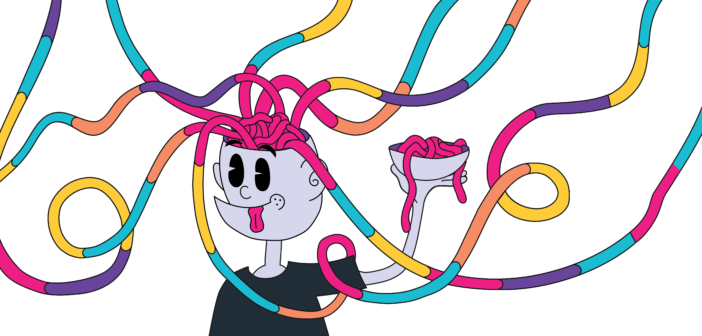In recent years, we have seen attitudes towards mental health improve all around us. There are more open and honest conversations on social media apps like TikTok, where users have opened up about their mental health struggles and have provided a supportive environment for mental health. Several states, including Illinois, have passed legislation allowing students to take mental health days and companies are now providing their employees mental health days.
Our views towards mental health have improved, but where have we been in the past? And what more can we do to rid the stigma around mental health?
“God’s way of punishing you”
Dr. Lelia Azarbad is a professor of psychology at NCC. She explained how the idea of mental illness in the 19th century was often viewed.
“If you had mental illness it was because you had done something bad,” said Azarbad, “and this was God’s way of punishing you.”
She noted how there was no treatment for those who had mental illness and they would be locked away in “hospitals” but were treated like prisoners.
According to the University of Toledo’s From Quackery to Bacteriology, there was very little care for people with mental illness in the 19th century. They were often sent to prisons, charitable housing, or ill-equipped family members. However, Azarbad mentioned treatment changed in the mid-1900s toward more humane treatments of mental health. “Now, I think within certain cultures,” Azarbad notes, “(there is) this idea that mental illness means you’re weak or that therapy is reserved for people that are severely mentally ill.”
Attitudes between generations and between ethnicities
While mental health treatment has improved since the 1900s, attitudes towards mental health differ between generations. Azarbad noted a thesis study conducted by Kristin Kiper, a former student of hers, where older adults in nursing homes and college students were asked how comfortable they felt with an individual with a mental illness and tested their mental health literacy. Kiper found that older individuals were less comfortable with an individual with a mental illness and therefore had more stigma toward mental health. The study also showed that younger adults were more literate on mental health as they were able to identify mental health issues based on a vignette of an individual.
Azarbad also noted that these discrepancies in attitudes toward mental health were not just between generations but research also suggests between ethnic groups. “In some cultures – Middle Eastern cultures, Hispanic cultures, African American and Black cultures there is more stigma around talking about mental health,” said Azarbad.
Nayeli Montes, ‘22, is the president of Cardinal Strong, a mental health advocacy group on NCC’s campus. She felt it was taboo even to discuss mental illness in the Latin background she was raised in. However, Montes mentioned how even her parents’ attitudes toward mental health have changed in the past few years.
“My siblings are older than myself, like five or six years older, and for them, mental illness was so taboo to bring up to our parents just because of the way we grew up.” Montes said, “And when I started opening up about my anxiety and my panic attacks, I felt like my parents were more open to what I was going through.”
The Future of Mental Health
Attitudes toward mental health continue to improve, but what more can be done?
Montes believes the stigma that every mental illness requires medication needs to change. “I feel like automatically when you think, ‘oh, they forgot to take their medication today, so that’s why they’re acting the way they are.’ And I think there’s a huge stigma on the fact that everyone who has a mental illness requires medication, and we all know that that’s not entirely true.” Montes said, “There’s a lot of things that individuals with mental health do other than just medications.”
Azarbad thinks we need to talk more about mental health to normalize it. She also believes we should focus more on prevention than intervention. “Prevention is ideal. Let’s try to reach people before a problem develops.” Azarbad said.


1 Comment
—Mental health stigma: then & now
May I offer a litte more insight:
How we taught mentl health stigma then, how we teach mental health stigma now.
Then: It was much whisper and gossip.
Now: It is open, organized, and thorough.
Then: We learned it through the grapevine.
Now: We learn it in curricula.
Harold A Maio